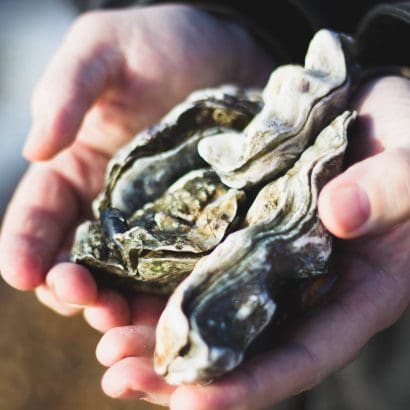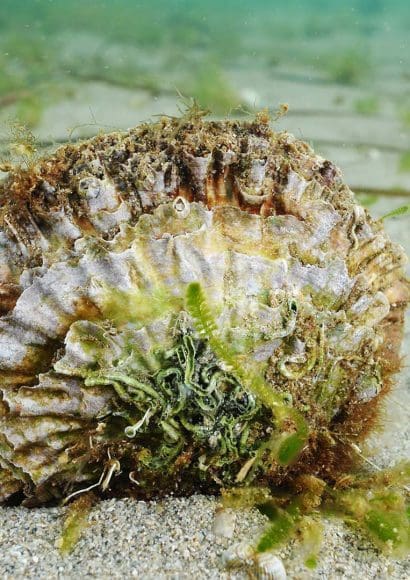
Oysters are considered authentic delicacies of the sea, appreciated for their delicate flavor and smooth texture. These bivalve mollusks have conquered the palates of gastronomy enthusiasts worldwide, becoming one of the most valued and sought-after seafood products in restaurants and specialized markets.
However, behind each exquisite oyster that reaches our plate, there is a fascinating cultivation and preparation process worth exploring. In this article, we will dive into the world of oysters to learn about their cultivation process and discover how they are prepared in gastronomy.
From the moment the tiny oyster seeds are harvested to their transformation into succulent delights, there is an entire journey that involves care, patience, and technical knowledge. We will explore each stage of this process, from rearing in nurseries or marshes to their growth and development.
Contents
Cultivation process of oysters.
The cultivation process of oysters involves several stages and techniques to ensure their growth and development in controlled environments. Here is some general information about the cultivation process:
Collection of oyster seeds:
The process begins with the collection of oyster seeds, also known as spat. These tiny oyster larvae are either collected naturally from the wild or obtained from hatcheries where they are bred.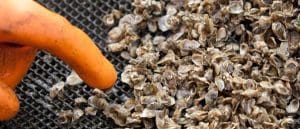
Setting and spat bags:
The collected oyster seeds are then carefully distributed onto suitable substrates, such as empty oyster shells or specially designed spat bags. These substrates provide a surface for the oyster larvae to attach and grow.
Nursery phase:
During the nursery phase, the spat bags or substrate with attached oyster seeds are placed in controlled environments, such as floating trays or tanks. These environments protect the developing oysters from predators and allow for optimal growth conditions, including water quality, temperature, and nutrient availability.
Transfer to grow-out areas:
Once the oysters have reached a certain size and maturity, they are transferred to grow-out areas, which can be natural coastal waters, estuaries, or specially designated oyster farms. Oyster farmers carefully select suitable locations with the right water conditions for the oysters to thrive.
Hanging or bagging:
In the grow-out areas, the oysters are typically hung in bags or cages from floating racks or lines. This technique keeps the oysters off the seabed, allowing them to feed on plankton-rich water and promoting better shell development.
Maintenance and care:
Oyster farmers regularly monitor and maintain the cultivation environment, ensuring that the oysters have access to clean water, proper food sources, and suitable salinity levels. They may also clean the oyster shells to prevent fouling and promote healthier growth.
Harvesting:
The time it takes for oysters to reach harvest size varies depending on the species and environmental conditions. Generally, oysters are harvested when they have reached a desirable size, typically after several months to a few years of cultivation. Harvesting methods can involve hand-picking, dredging, or using specialized oyster harvesting equipment.
Varieties of oysters.
Oysters come in a wide range of varieties, each with its own unique characteristics and flavor profiles. Here is some general information about the different varieties of oysters:
Pacific Oysters (Crassostrea gigas):
Pacific oysters are one of the most commonly cultivated oyster species worldwide. They have a deep cup shape and a briny, mildly sweet flavor. Pacific oysters are known for their rapid growth and adaptability to different environmental conditions.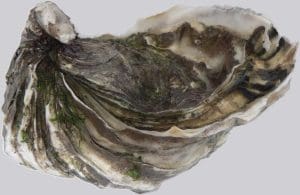
Eastern Oysters (Crassostrea virginica):
Eastern oysters are native to the Atlantic coast of North America. They have a smooth, elongated shell and a mild, slightly salty flavor. Eastern oysters are often prized for their creamy texture and delicate taste.
Kumamoto Oysters (Crassostrea sikamea):
Kumamoto oysters originate from Japan but are now also cultivated in other regions. They have a small, petite shell and are known for their sweet, buttery flavor. Kumamoto oysters have a smooth, tender flesh and are highly regarded for their culinary appeal.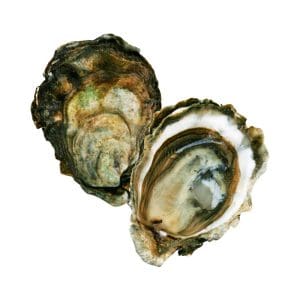
European Flat Oysters (Ostrea edulis):
European flat oysters, also known as Belon oysters, are native to the coasts of Europe. They have a distinctive, irregularly shaped shell with a deep cup and a rich, briny flavor. European flat oysters are highly valued for their complex taste and are considered a delicacy in many culinary traditions.
Olympia Oysters (Ostrea lurida):
Olympia oysters are native to the Pacific Northwest of North America. They are the smallest oyster species and have a sweet, cucumber-like flavor. Olympia oysters have a delicate, tender texture and are favored by enthusiasts of regional and sustainable seafood.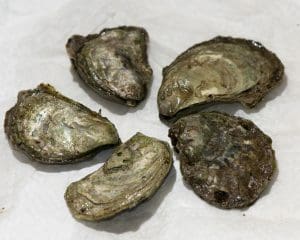
Sydney Rock Oysters (Saccostrea glomerata):
Sydney Rock oysters are native to Australia and are highly regarded for their unique flavor. They have a plump, round shell and offer a balance of sweetness and saltiness. Sydney Rock oysters are often enjoyed both raw and cooked in various culinary preparations.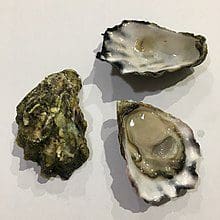
Preparation of oysters in gastronomy.
The preparation of oysters in gastronomy involves a wide range of techniques and culinary practices that highlight the natural flavors and textures of these delectable shellfish. Here is some general information about the preparation of oysters in gastronomy: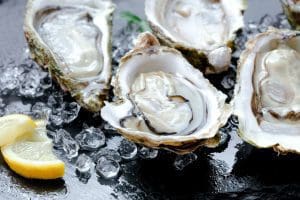
- Shucking: Shucking is the process of opening the oyster shell to access the meat inside. Skilled chefs or oyster shuckers use a special knife to carefully pry open the shell while preserving the oyster’s integrity. It requires precision and practice to shuck oysters properly.
- Serving raw: Oysters are often enjoyed raw, allowing their fresh, briny flavors to take center stage. They can be served on a bed of ice or rock salt to keep them chilled and presented in their natural shells. Accompaniments such as lemon wedges, mignonette sauce (a mixture of vinegar, shallots, and pepper), or cocktail sauce may be provided for added flavor.
- Grilling and broiling: Oysters can be prepared on a grill or broiled under high heat. Grilling or broiling adds a smoky and slightly charred flavor to the oysters while maintaining their natural juiciness. Various toppings, such as herb-infused butter, cheese, or breadcrumbs, can be added before grilling or broiling to enhance the taste.
- Steaming: Steaming is another popular method of preparing oysters. They are placed in a steamer basket or a pot with a small amount of liquid, such as wine or broth, and cooked until the shells open. Steaming helps to preserve the delicate texture of the oyster while imparting subtle flavors from the cooking liquid.
- Frying: Oysters can be breaded or battered and deep-fried until golden and crispy. Fried oysters are often served as appetizers or incorporated into seafood dishes, adding a delightful crunch and a contrast of textures to the overall dish.
- Ceviche and marination: Oysters can be marinated or included in ceviche, a dish where the seafood is “cooked” in citrus juice. The acidity of the citrus juice gently firms up the oyster meat while infusing it with tangy and refreshing flavors.
- Incorporation in sauces and stews: Oysters are also used to enhance the flavors of various sauces, stews, and soups. They can be added to seafood chowders, gumbo, or pasta dishes, imparting their unique taste and adding a touch of elegance to the overall preparation.
If you want to discover some exquisite recipes based on oysters, I invite you to click Here.
Health benefits.
The consumption of oysters can offer various health benefits due to their nutrient-rich composition. Here is some general information about the health benefits of oysters:
Nutrient powerhouse:
Oysters are a rich source of essential nutrients, including vitamins (such as vitamin D, vitamin B12, and vitamin C), minerals (such as zinc, iron, and selenium), and omega-3 fatty acids. These nutrients play vital roles in supporting overall health and well-being.
Heart health:
Oysters contain omega-3 fatty acids, which are known for their heart-healthy properties. Omega-3 fatty acids have been associated with reducing inflammation, improving blood circulation, and lowering the risk of heart disease.
Immune system support:
Oysters are packed with immune-boosting nutrients, particularly zinc and vitamin C. Zinc plays a crucial role in immune function, while vitamin C acts as an antioxidant and helps support the immune system’s proper functioning.
Energy production and metabolism:
Oysters are a good source of vitamin B12, which is essential for energy production and the proper functioning of the nervous system. Vitamin B12 also plays a role in metabolism and the formation of red blood cells.
Bone health:
Oysters contain calcium, phosphorus, and vitamin D, which are all important for maintaining healthy bones. These nutrients contribute to bone strength, density, and the prevention of conditions such as osteoporosis.
Cognitive function:
The omega-3 fatty acids found in oysters have been linked to improved cognitive function and brain health. They may help enhance memory, focus, and overall cognitive performance.
Mood regulation:
Oysters contain several nutrients, including zinc and vitamin B12, which are involved in neurotransmitter production and regulation. Adequate levels of these nutrients can contribute to balanced moods and a positive mental outlook.
Curiosities about oysters.
In conclusion, exploring the curiosities surrounding oysters reveals fascinating aspects about these remarkable shellfish. From their historical significance and ecological contributions to their intriguing reproductive behavior, oysters captivate our interest and ignite our culinary imagination.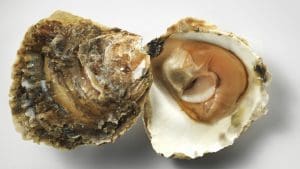
Oysters have been valued by cultures throughout history, symbolizing wealth, luxury, and indulgence. Their cultivation and consumption have evolved over centuries, adapting to cultural preferences and culinary techniques. Today, they continue to hold a special place in gastronomy, appreciated for their delicate flavors and unique textures.
Beyond their gastronomic appeal, oysters play a crucial role in marine ecosystems. They act as natural water filters, purifying their surroundings and improving water quality. Oyster reefs provide habitats for a diverse range of marine species, supporting biodiversity and maintaining ecological balance.
The reproductive process of oysters is a marvel in itself. Their ability to change gender, release massive quantities of eggs and sperm into the water, and undergo complex fertilization and larval stages showcases the resilience and adaptability of these organisms


